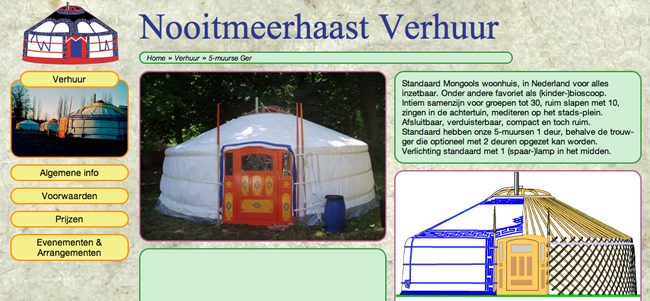THE MONGOLIAN YURT
I have met friends in Iceland that have built a Mongolian Yurt and are doing creative projects and promotion of a different way of working and living. We had great conversation about the use of materials and the traditions that are inherent in this kind of adaptable architecture. The Mongolian Yurts are attracting interest from people in many parts of the world as an ecologically friendly and attractive living space that can be used for a variety of purposes. Erwin van der Werve and his wife Þóra Sólveig Bergsteinsdóttir have been travelling with their construction to exhibitions creating events and meeting locals in various places. It is obvious that their work is very devoted and their construction is something that could stimulate and support various activities in culture. Here is information about the construction and use.
I myself am especially interested in the comparism one can make between this culture and the various other cultures like the laps in Northern Scandinavia, the Indian culture in Canada, Eskimo culture in Greenland etc. It will be interesting to compare similarities and define differences. This is something that we are doing in our research into sweat culture like the Traditional Canadian Sweat culture and many more. We have built some structures and experimented and will continue the coming years with design and architecture students. Maybe one day one will find something worth reflecting on after this.
The Yurt is a circular structure built using a wooden, accordion frame that can be easily taken down, made compact for carrying, and reassembled. On this frame are placed three to four layers of felt, traditionally made from sheep’s wool, and an outer layer of waterproof canvas. The felt and canvas are secured to the wooden frame and the resulting structure can stand securely in one place for months or even years at a time.
One questions how adaptable this construction is but it is inspiring and relates to cultural heritage and can stimulate other search into older cultures that have developed for centuries.
I like the adaptability and flexibility in transport. Creating events is important in today’s culture where adventure and communication always becomes more important. I hope they manage to develop events and will definitely try to work out some support for this project.
 March 8, 2012
March 8, 2012
 Posted in: ARCHITECTURE, ART, DESIGN, ICELAND, PONDERINGS, SUSTAINABILITY
Posted in: ARCHITECTURE, ART, DESIGN, ICELAND, PONDERINGS, SUSTAINABILITY



